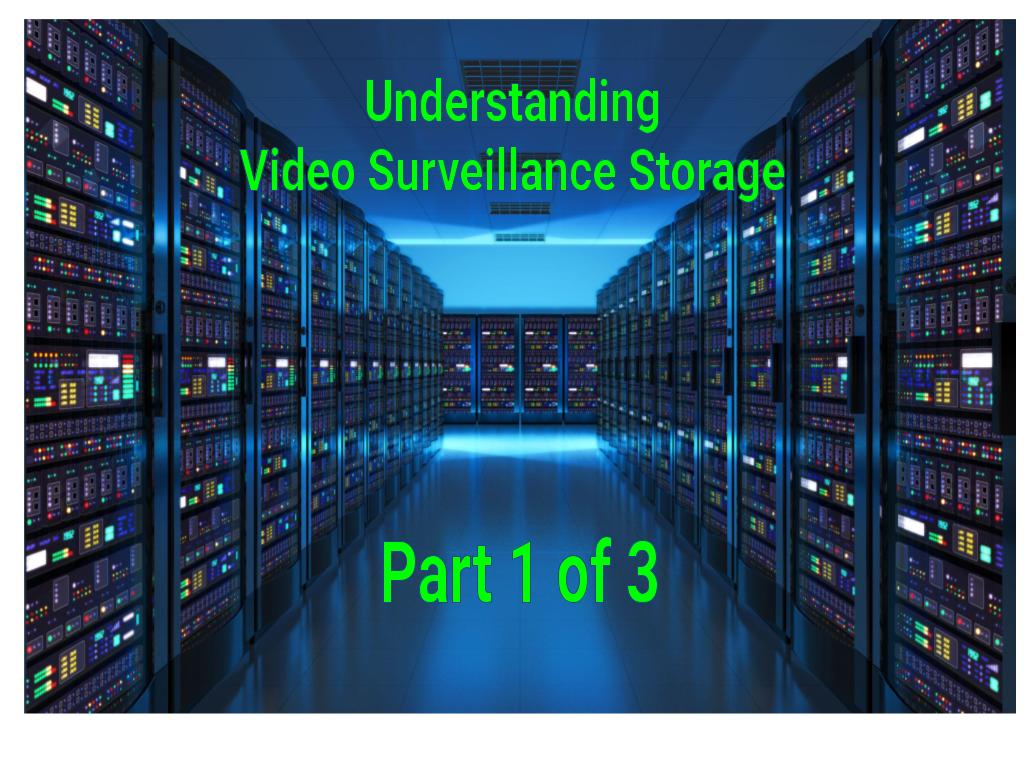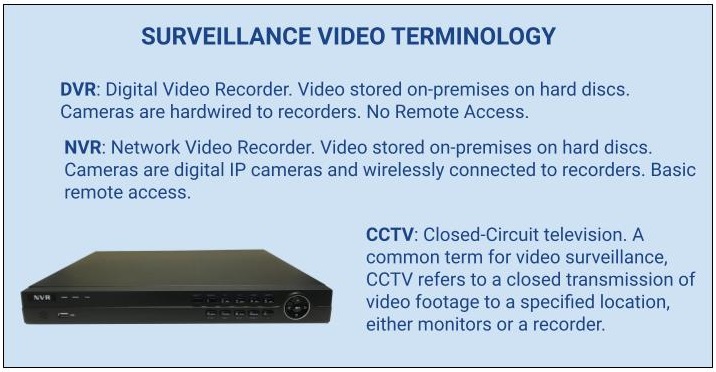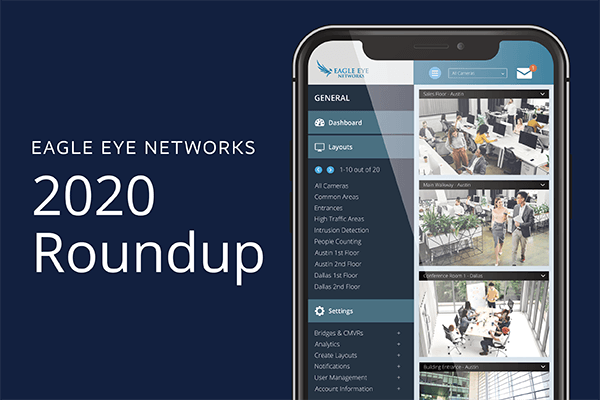
As new technologies in the security industry become more affordable and more widely available there are new options for commercial surveillance systems. There are more ways than ever to store surveillance video including different on-premises devices and modern cloud-based technologies.
When choosing a surveillance system for a business, it’s important to weigh the pros and cons of where the video surveillance is stored and the functions and cost of a new surveillance system. This article will look at on-premises recording devices and briefly explain the differences between digital video recorder (DVR) and network video recorder (NVR) systems and what surveillance systems are best for businesses. Part Two of this series covers the differences between on-premises and cloud video management systems (VMS), and Part Three compares the variations in cloud-based surveillance systems.
NVR and DVR systems are both used for on-premises storage of business security video, but there are some key differences between the two. NVR systems encode and process video data at the camera, then stream it to the NVR recorder for storage and remote viewing. The “N” in NVR stands for network and these systems can be connected to an outside network for remote viewing and archival data storage. NVRs require IP, or internet protocol, cameras, while DVRs are used with analog or digital cameras. DVR systems process video data at the recorder and all functions of the security system, including viewing video clips, happen on the device.

What is a DVR Surveillance System?
DVR recorders for CCTV video surveillance gained popularity in the 2000s when the technology to record video on hard discs surpassed tape-based recordings. As technologies, particularly for digital IP cameras, have evolved, DVR systems are now mostly considered simple, low cost surveillance solutions — a device in a building where everything is managed and viewed at that device.
DVR systems are compatible with analog cameras as well as digital cameras and the recorders are typically hard-wired to these cameras. Because of the wired connections, installation is labor intensive and expensive, but these systems are reliable as there are no routers or wireless connections that can be impacted by internet network service outages. As newer recording technologies have become standard, replacing DVR recorders has dropped in cost as long as existing infrastructure does not also need replacing. DVR systems do not offer a lot of features compared to newer NVR and cloud-based technologies.
These basic DVR systems are also limited by the bandwidth of the wires connecting the cameras as far as video quality. Additionally adding new cameras to the system also can be a time consuming process. DVR systems do not usually allow for remote access-meaning that the user will need to view surveillance footage directly on the physical DVR device. It is up to business IT personnel to make sure that software and security patches are up to date for the system.
There are solutions to upgrade existing analog camera systems to cloud-based video surveillance. Eagle Eye Networks Cloud Video Management System (VMS) can connect any camera, including analog cameras, to their cloud system.
DVR vs NVR: Benefits of an NVR Surveillance System
NVR systems offer a number of advantages over DVR systems, including better scalability, easier setup, and better image quality. NVR systems offer remote access for viewing and archiving data, usually through a network VPN (virtual private network). NVR systems have become the preferred choice over DVRs for businesses on-premises storage systems. High quality digital IP cameras have dropped in cost in the last several years, only improving the resolution quality that these systems can transmit.
With the benefits of NVR systems also comes a greater cost. NVR systems are typically more expensive than DVR systems. But if upgrading a system is under consideration, an NVR or cloud system can be less expensive than a DVR system in the long run. Since cameras configure and connect wirelessly to the NVR system, there can be some compatibility issues that should be investigated before choosing an NVR. Both NVR and DVR systems are limited on storage capacity based on the data space on the hardware, and customers need to plan for this prior to purchasing the device. An open port required for network access can create a security vulnerability for a networked system.
Some of the drawbacks of on-premises systems have been solved by cloud-based commercial surveillance systems like the Eagle Eye VMS. Other hybrid systems combine functions of both on-premises storage and cloud connected features. Part Two of this series compares on-premises systems to cloud-based surveillance systems and Part Three looks at these hybrid cloud-managed systems.
Other posts that might interest you

3 Ways a Cloud VMS Helps Keep Community Colleges Safe
Since the pandemic hit, schools around the world have scrambled to meet the needs of remote educators and learners. Community colleges are no different. For the past year, their limited…
April 20, 2021
5 Questions You Should Ask Your Video Surveillance Provider About Its Cloud
Not all clouds are created equally. There are public clouds, offered by public companies like Amazon Web Services (AWS) and Google Cloud, that cater to a large number of users.…
November 23, 2020
2020 Roundup: The Year’s New Features and Offerings At-a-Glance
When you buy an onsite system, it’s only as good as the day you purchased it. It’s kind of like driving a new car off the lot. It instantly depreciates.…
December 17, 2020








